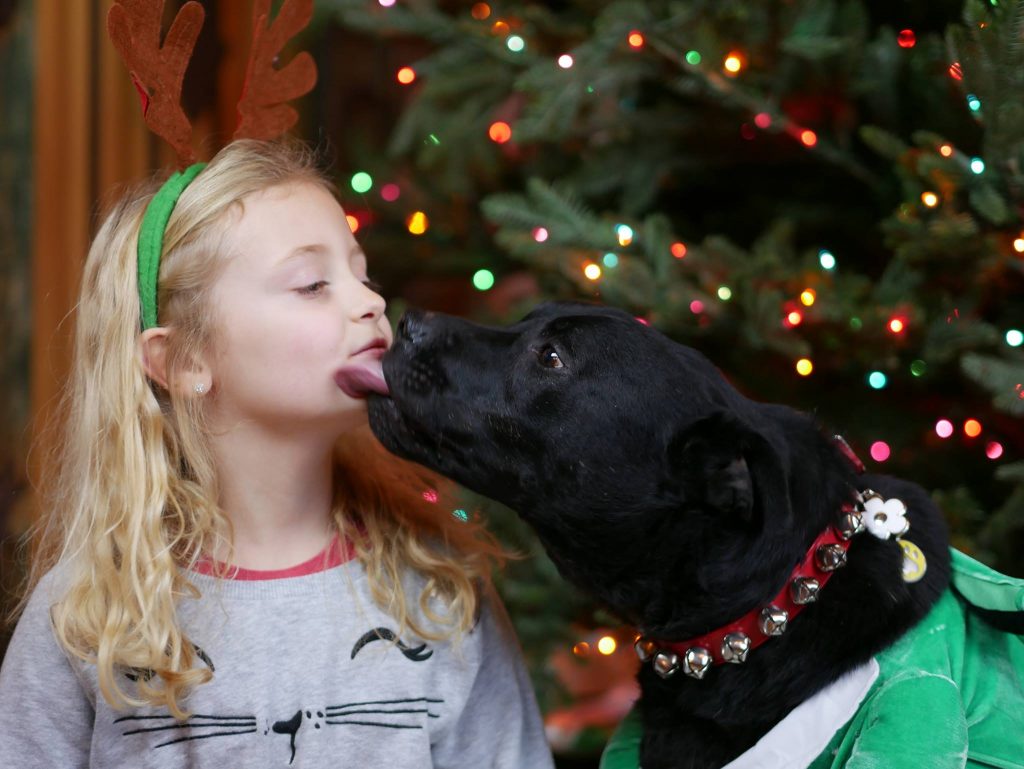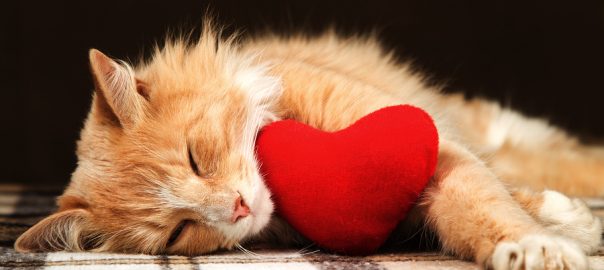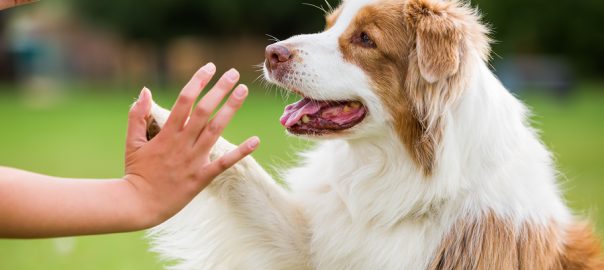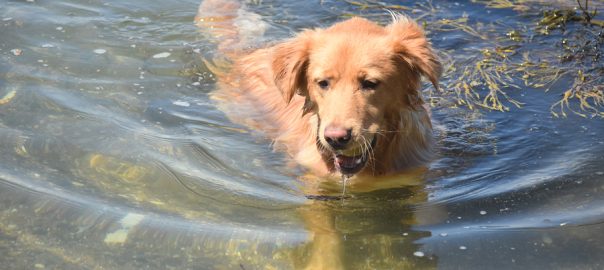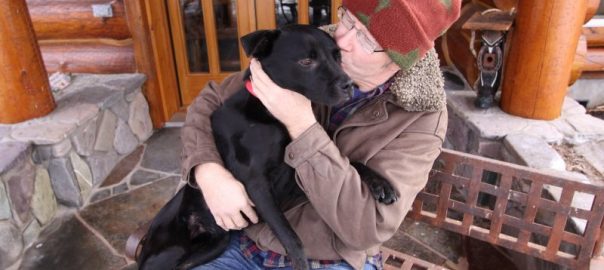Our family welcomed a new family member into our home on Christmas Eve in 2010, and said goodbye to her on Christmas Day seven years later. Our beloved family member was an eight-year-old Lab/pit bull mix, who came with the name Gracie.
I typically call euthanasia as the gift of the “final grace,” and it couldn’t some soon enough for Gracie on her final day as I held her head, stroked her contorted body, and told her over and over for two hours that she was loved, as I sat beside her on the floor of our house waiting for a colleague/friend to arrive with a steady hand and the “juice” that would end her suffering quickly.
I often described Gracie as “perfectly flawed,” as she had a variety of serious physical challenges but was perfect in my eyes. Found originally as a stray puppy in extreme Northern Idaho where we live, she was taken to the Bonners Ferry City Pound, a horrific facility that was the only animal shelter at the time in Boundary County, Idaho. She entered the shelter scared and malnourished, but with no physical injuries.
Full of puppy energy and despite plenty of regular exercise and loving care from Kim Putnam and Kate Turner of Second Chance Animal Adoption, Gracie was what some call “pound sour,” which is slang for dogs that don’t adopt well to life in a dark, dank, tiny run with no windows but lots of gloom and doom. Gracie’s outlet for her stress, was to jump up and down, over and over for most of the day, to the point that she literally pounded the fragile ends (growth plates were still open) of her femur, tibia, and fibula off.
 We’re talking a loss of about 2” inches off both bones, destroying any resemblance of knees. Her hip joints were intact, but she was left with masses of fibrous scar tissue that served to fuse her back legs into a crouched position. Without normal movement, the muscles also atrophied, and with her contorted, crouched stance and labored movement, some said Gracie reminded them of Gollum from the Lord of the Rings movies.
We’re talking a loss of about 2” inches off both bones, destroying any resemblance of knees. Her hip joints were intact, but she was left with masses of fibrous scar tissue that served to fuse her back legs into a crouched position. Without normal movement, the muscles also atrophied, and with her contorted, crouched stance and labored movement, some said Gracie reminded them of Gollum from the Lord of the Rings movies.
Gracie also had a crazy set of chompers. If you’ve ever seen novelty Billy Bob teeth, Gracie could have been the model for the canine version. Her teeth were of different heights and shapes, and instead of being in a row, looked like a drunk, blind person put them into place haphazardly. While the north end of Gracie was what my Mom used to say “only a mother could love,” her south end was kind of odd, too, with a rigid tail that was like an 18-inch-long hickory sapling. That tail could do some major percussion on a wall, or put the hurt on the side of your leg, when she was excited.
Veterinarians and veterinary nurses love pit bulls, and I often illustrate this affection-connection when writing, speaking, or doing TV by telling folks that we owned a very special dog, a canine cocktail who was half pit bull and half Black Labrador retriever. I joked that this was the ideal mixed breed, as Gracie might chew your arm off, but she’d bring it back to you.
It made for a smile or laugh, but in reality, there wasn’t an iota of aggression in “Gracie Girl,” as I often called her. Writers hate clichés but I don’t know a better description than to say she was a lover, not a fighter. The only thing she hated was small, black tree squirrels, and she would sit under a Ponderosa Pine tree and bark for hours.
 With a major deformity and severe arthritis, Gracie had good days and bad days. Same for my wife Teresa who has rheumatoid arthritis and Nate, our neighbor (and caretaker when we travel), who has a progressive, extremely painful and debilitating neurological problem. Both can identify with Gracie’s limitations and days of hell, and each found great comfort in spending time with Gracie. This connection was not just emotional, in that she made them feel good, but physically healing by harnessing the healing power of pets.
With a major deformity and severe arthritis, Gracie had good days and bad days. Same for my wife Teresa who has rheumatoid arthritis and Nate, our neighbor (and caretaker when we travel), who has a progressive, extremely painful and debilitating neurological problem. Both can identify with Gracie’s limitations and days of hell, and each found great comfort in spending time with Gracie. This connection was not just emotional, in that she made them feel good, but physically healing by harnessing the healing power of pets.
Because of my crazy travel schedule (the vast majority for work in general and Fear Free specifically; I was gone from home about 80 percent of 2017), I anticipated and treasured the days when I was home at Almost Heaven Ranch and Gracie was a highlight of those days. Gracie loved the outdoors more than the indoors and relished:
- Starting a sing-song by barking back at the neighbor’s dogs (our closest neighbor is about 1/3 mile away, the next one a mile)
- Catching scent on the wind
- Alarm barking and then wobbling over to greet Marty, the FedEx delivery driver, who always had a hard biscuit(s) and a soft heart for her.
- Lying in the cool grass in the shade of the giant pine tree in our front yard
- Ambling down into our pasture to dig up pocket gophers. When Gracie did this, she would always be really sore and crippled the next day, but was worth it.
- Catching a cornucopia of dog treats that I would toss to her and she’d snatch up with aplomb. Gracie had a huge mouth, and when she’d catch a treat her jaws would snap shut with a very audible sound. The sound always made us smile.
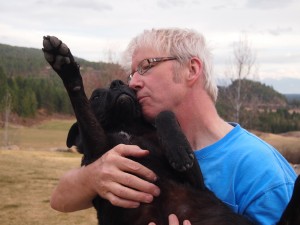 Going from our house to our two-story log horse barn, which sits on a small hill above our house.
Going from our house to our two-story log horse barn, which sits on a small hill above our house.
Of all of these activities, going up to the barn was her very favorite of all. It’s because she loved to eat grain that the horses spilled in their stalls, lick out the bucket I mixed the grain/corn/molasses in, get some doggy treats in the medicine room in the barn, nip at the horses as they flew by (missing them by about a yard) and going bobbing for horse apples out in the corral. Let’s just say Gracie’s breath wasn’t the sweetest but that never stopped me from kissing her (usually near her eyes or cheeks) or accepting the biggest, slurpiest kisses from her.
During this last sleepless Christmas Eve, I replayed the arc of Gracie’s life before, with, and after us.
Gracie languished in the shelter for two years, seemingly unadoptable. She had lots of loving hands taking care of her at the shelter, but it seemed nobody had room in their hearts or homes for a black, severely crippled pit bull mix who had been in the shelter so long. A few lookers but no takers. Until one special day.
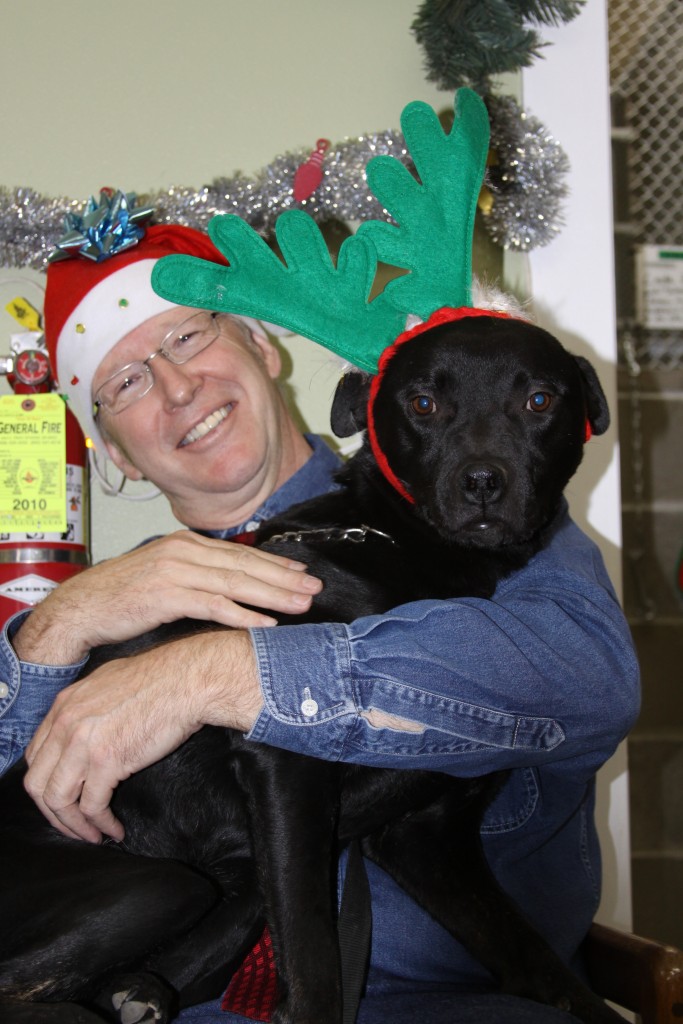 My trainer and co-author daughter Mikkel and I were in Sandpoint, Idaho, on Christmas Eve, 2010, at Panhandle Animal Shelter to take part in our annual Happy Howlidays event where we gave each of hundreds of dogs and cats a) a new toy, b) some tasty treats, and c) the promise that we’d all redouble our efforts to find them loving, forever homes.
My trainer and co-author daughter Mikkel and I were in Sandpoint, Idaho, on Christmas Eve, 2010, at Panhandle Animal Shelter to take part in our annual Happy Howlidays event where we gave each of hundreds of dogs and cats a) a new toy, b) some tasty treats, and c) the promise that we’d all redouble our efforts to find them loving, forever homes.
Upon leaving the shelter and driving up to Bonners Ferry, Idaho, to do the same event in our hometown shelter (Second Chance Animal Adoption), I was talking to Mikkel about how it kept being laid upon my heart to get another shelter dog, but that I was in no hurry. Mikkel loves dogs, and loves adoptions, so she quickly agreed to help me look, but strongly recommended that I should look to adopt a 10-20 lb., long-haired, light-coated (or with multiple coat colors for a lot of contrast), neutered female, healthy dog.
Light-weight would mean the dog would be portable and could be flown under my seat on the airplane. Long-haired dogs shed less than short haired dogs and you can keep them groomed short for minimum of loose hair; important when you’re doing TV and don’t want to wear your pet on camera. Light coated or a dog with contrasting colors looks great in photos or on TV. Female dogs look better on camera if you have to show their stomach or groin area and don’t want an R-rating.
We agreed to look for just the right pet, to not be in any hurry, and would target an adoption about six months later when it was summer.
An hour later I instantly fell in love with a dog who couldn’t have been more of an opposite of our canine shopping criteria. Gracie was 50 pounds, short-haired (she shed like a hairy hand-grenade), with jet black hair and too crippled to do any kind of tricks or exercise on videos or TV.
Mikkel came looking for me at the event and found I was sitting in Gracie’s run at Second Chance giving her a stuffed KONG (the toy and treat we gave each pet on Happy Howlidays) and telling her we’d work twice as hard to find her a home. Gracie ignored the toy and treats and instead laid her big ‘ol pit head in my lap and looked up at me. I’m sure many of you have been similarly gobsmacked by a pet; we looked at each other saying without words, “I’m yours and you’re mine.”
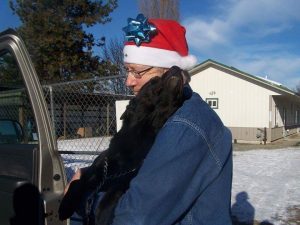 Gracie had made one move a little while before from a dark, decrepit, super-cramped mini-run at the city shelter to a bright, new, spacious run at Second Chance’s new shelter (she rode from the old shelter to the new one on a float and was the first dog through the door), and now she made another on Mikkel’s lap in my pickup truck, finally landing at our 150-acre, Almost Heaven Ranch. Her forever home.
Gracie had made one move a little while before from a dark, decrepit, super-cramped mini-run at the city shelter to a bright, new, spacious run at Second Chance’s new shelter (she rode from the old shelter to the new one on a float and was the first dog through the door), and now she made another on Mikkel’s lap in my pickup truck, finally landing at our 150-acre, Almost Heaven Ranch. Her forever home.
Gracie flourished at our house, and when Kim or Kate came to visit they couldn’t believe how she’d bloomed. She developed into a very muscular, shiny, happy dog who always alarm barked at visitors and then threatened to lick them to death. While we loved having her in the house, she much preferred the great outdoors, chasing snow shoe rabbits, chipmunks, ground squirrels, tree squirrels (her nemesis), and the occasional deer or horse.
Gracie seemed to always forget that she was crippled and never gave up her tortoise-like chase until almost her last day. In fact, Mikkel came home for Christmas vacation this year and when I was on a business trip in late December, went up to the barn with her mom, Teresa, to do the chores and Kel had to wrangle Gracie and our horse Benny when Gracie decided to try her paw at chasing the horses. Both Mikkel and Teresa got to watch Gracie catch treats in her mouth up at the barn with her tail wagging so vigorously from side to side that it almost lifted alternate back feet off of the ground.
I got home about a week before Christmas this year and immediately knew something was wrong with Gracie. She had a green nasal discharge, hard masses under her left, front leg, and she was wobbling. I palpated her abdomen and felt an enlarged, lumpy liver and spleen. Being a veterinarian can be such a curse because on your own pet, your eyes cannot un-see extreme pain at a distance, the wobble means a traumatized spinal cord, and your fingers feel death just under the skin.
After seeking veterinary care and diagnostics, we knew Gracie could not be successfully treated, let along cured, so we opted for palliative care and wanted her to make it through Christmas Day.
The reason we wanted Gracie to be with us through Christmas had nothing to do with her leaving us the same day she came to us, but only because she could share her very favorite foods with the rest of the family. We’re talking smoked turkey breast and salmon, right off the grill. For reasons only known to our Heavenly Father, Gracie ate an amazing last supper, but couldn’t last the day. I called Dr. Rolan Hall, who without hesitation agreed to do a house call on Christmas Day.
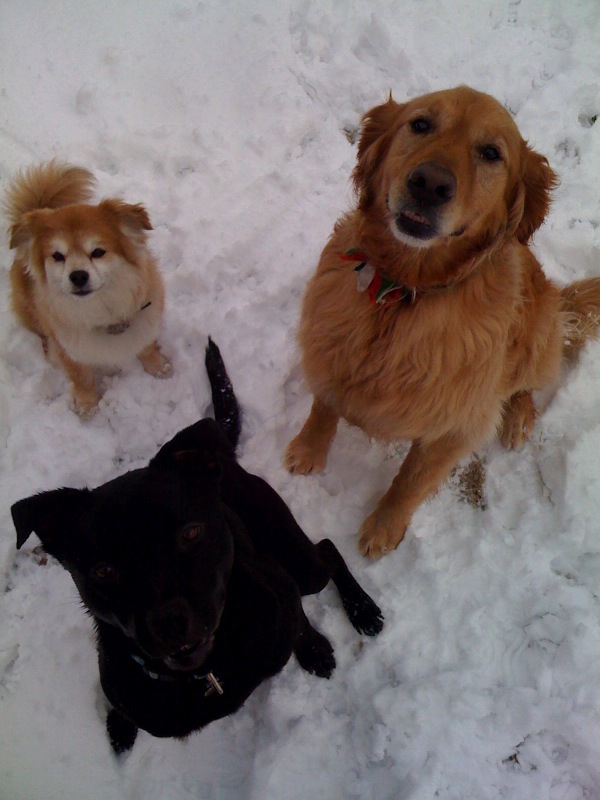 Waiting for Dr. Hall to arrive, I had a long talk with Gracie. We talked of hot dogs and s’mores eaten at our firepit, massages received from Teresa, my baby-talking her daily calling her Gracie-Girl, long naps under her favorite tree, deer bones she hauled into the yard from the forest, the time she got lost/fell over a steep hill and I found her only after an almost-all-night search, about the canine buddies she’d said goodbye to (Shakira, Bruce, Quora, and Quin’C) and her four-legged buddies who would be with her as she crossed over (Quixote, QT Pi, Quill’N, Willy, and Talley).
Waiting for Dr. Hall to arrive, I had a long talk with Gracie. We talked of hot dogs and s’mores eaten at our firepit, massages received from Teresa, my baby-talking her daily calling her Gracie-Girl, long naps under her favorite tree, deer bones she hauled into the yard from the forest, the time she got lost/fell over a steep hill and I found her only after an almost-all-night search, about the canine buddies she’d said goodbye to (Shakira, Bruce, Quora, and Quin’C) and her four-legged buddies who would be with her as she crossed over (Quixote, QT Pi, Quill’N, Willy, and Talley).
Teresa, our son, Lex, and I kept telling Gracie how much we loved her, and we replayed for her great times she’d had being trained by Mikkel and played with by our granddaughter, Reagan. Tears poured out and I struggled for breath. Teresa, who had never been able to be present to say goodbye to any of our pets, felt so sorry for me and worried about me that she offered to be with Gracie for the final moments. I said thanks, but no thanks, knowing that Teresa would really suffer from it (emotionally and physically with her rheumatoid arthritis) and that I wanted to be with Gracie to the end.
Gracie was in debilitating pain that even potent pain meds couldn’t douse. Teresa and I both massaged her; Teresa on her ears while I rubbed the massive jaw muscles above the orbits of Gracie’s eyes. Gracie-Girl stared out into the distance as we kept telling her that it was okay to go. We prayed out loud, together, “Please God, let Gracie go. Let her body be free of pain and suffering. Run free, Gracie. We’ll see you again someday, but this time with perfect bodies.”
Our voices broke, bodies trembled, and tears flowed as we waited for what seemed like an eternity for the gift of death to arrive. In about an hour, Dr. Hall knocked at the back door and came inside. Lex came downstairs to help all of us (Dr. Hall, Gracie, and me).
I didn’t rise to meet Dr. Hall, but instead knew I’d better say my final goodbyes to Gracie as Dr. Hall was busy. Gracie was his third euthanasia that day; he remarked that he always has a lot of them on Christmas. Ignoring the fact that Gracie had nipped at me three times as I rubbed her body (Gracie had never bitten anybody before; her spinal cord pain was off of the charts and she was just reflexively snapping out at the source of pain) I got in really close to Gracie’s face. Selfishly, I wanted to look closely into her dark brown eyes, smell her warm breath, whisper a final goodbye.
I comforted Gracie as Dr. Hall clipped the hair on her right front leg, applied a tourniquet, and drew up a syringe full of the liquid that would quickly and humanely end her suffering. I asked for a moment, leaned down and smelled her Frito feet, gave her a final kiss goodbye, and whispered in her ear, “You were loved, you were loved, you were loved.”
Blood back-flowed into the syringe showing the needle had found its mark. As the plunger was pushed in, Gracie pushed the air out of her lungs with one final exhale. I held her head and laid her down to rest. I closed her eyes. For the first time since I met Gracie seven years before, her body was completely relaxed. No pain. I looked up, choked up, giving thanks for the blessing that Gracie was no longer on the floor in front of me.
One final thing. Over the past 72 hours, many people have told me, “You gave Gracie a good home.” trying so hard to comfort me. Yes, I helped give Gracie not just a good home, but a great home. But as I told Teresa, “Gracie gave us a great life.”
